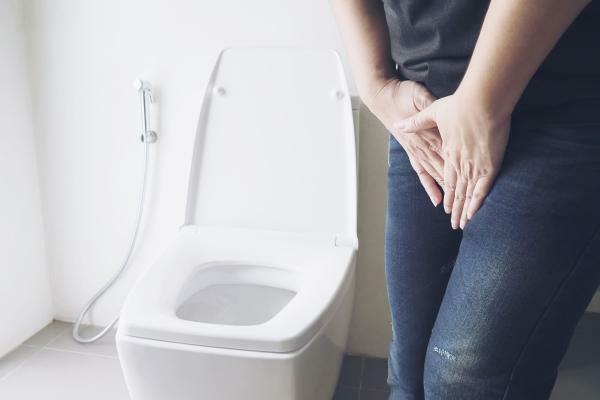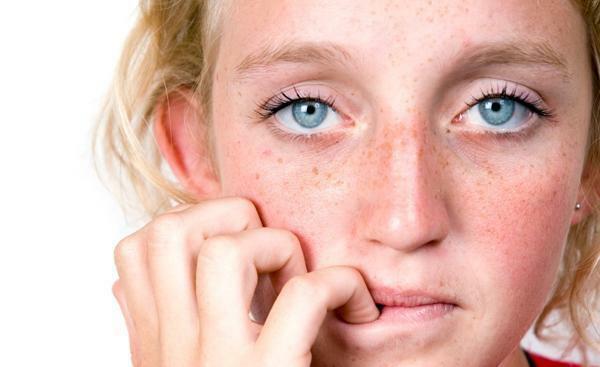
Paruresis or shy bladder syndrome is one of the psychological conditions that is a problem that harms many people when they carry out social activities outside their homes and share public situations with different environments. This clinical condition causes the body and mind to be in a state of tension. persistent due to the discomfort they feel when they have to urinate in the presence of others. Although it is true that inhibitions may exist in these circumstances, their consequences may increase if precise and relevant data in this regard is unknown.
In this Psychology-Online article we will provide you with information about the paruresis or shy bladder syndrome: what it is, symptoms, causes and treatment.
Index
- What is paruresis or shy bladder syndrome?
- Symptoms of paruresis or shy bladder syndrome
- Causes of paruresis or shy bladder syndrome
- Treatment of paruresis or shy bladder syndrome
What is paruresis or shy bladder syndrome.
Paruresis or shy bladder syndrome is a mental health problem characterized by inability or difficulty urinating in the presence of other people or in public places. In general terms, this clinical condition usually manifests itself in shared spaces, for example, bathrooms, regardless of whether they are public or private.
In these situations the person manifests a state of nervous tension which prevents urinating normally. Consequently, the urinary system could present alterations in its functioning.
Symptoms of paruresis or shy bladder syndrome.
To detect this problem in time, it is important to know the manifestations that occur at the level of emotions, thoughts and behaviors. Below we show you the symptoms of paruresis or shy bladder syndrome:
- Delayed urination in shared spaces.
- Inhibition, anxiety and anguish.
- Avoidance of social events for fear of urinating in public.
- Persistent worry.
- Catastrophic thoughts derived from social situations.
However, it is important to keep in mind that the isolated presence of any of these symptoms does not necessarily imply that we are in the presence of paruresis. The diagnosis should always be made by a mental health professional specialized in the subject who evaluates the clinical characteristics of each person.

Causes of paruresis or shy bladder syndrome.
This psychological disorder has some specific origins that give it entity. For this reason, it is valuable to know them in order to develop strategies to improve quality of life. In this section, we will point out the causes of paruresis or shy bladder syndrome:
Environmental factors
Having lived through unpleasant experiences in the past can be a condition for the development of a human being's social life. In this case, the inhibition to urinate arises as a result of having suffered situations of discomfort that have affected the emotions, behaviors and thoughts of those with this diagnosis.
Among the most common are the prohibitions and mandates about how to function in life. Given this, it is possible that the person has seriously suffered from a fear of exposure to various environments.
On the other hand, the imitation of behavioral traits can also influence this problem. As an example, a significant other may have the same levels of anxiety, fear, or discomfort.
Organic factors
The acquisition of biologically based diseases can alter the functioning of the human organism. For this reason, in the presence of paruresis or shy bladder syndrome, it becomes necessary perform a health exam to rule out medical conditions, such as any alterations in the system urinary.
Social factors
Finally, contempt, discredit in front of other people and fear of public exposure They can also be reasons that imply the presence of symptoms of paruresis or bladder syndrome. Shy.
In the following article we explain What is humiliation and how to heal it.
Treatment of paruresis or shy bladder syndrome.
Despite the complications that arise from this psychological condition, there are some approaches that provide an improvement in the main symptoms. Below we will explain the most effective treatments to address paruresis or shy bladder syndrome:
Psychological therapy
Going to a mental health professional invites you to reflect on personal aspects and set goals for daily life. At the same time, therapy is a space for conflict resolution and acquisition of tools to cope in a more pleasant way with situations of fear and/or anxiety caused by paruresis or shy bladder syndrome.
On the one hand, short-term therapies emphasize current problems and provide resources to deal with them. Among the best-known approaches to this type of therapy, the cognitive behavioral therapy.
On the other hand, long-term therapies try to locate the origin of conflicts by remembering situations from the past. past so that the person can opt for other types of solutions to the inconveniences that arise as a result of this chart. The best-known long-term therapy is psychoanalysis.
Psychiatric medication
In the event that complications persist for a long time and prevent the development of daily activities it may be necessary to take anxiolytics to reduce anxiety levels, always under the supervision of a mental health professional.
In this article you will find detailed information about Types of anxiolytics.

This article is merely informative, at Psychology-Online we do not have the power to make a diagnosis or recommend a treatment. We invite you to go to a psychologist to treat your particular case.
If you want to read more articles similar to Paruresis or shy bladder syndrome: what it is, symptoms, causes and treatment, we recommend that you enter our category of Clinical psychology.
Bibliography
- Loriente Zamora, C., (2007). What is Paruresis or Shy Bladder Syndrome? A transdisciplinary investigation. Spanish Urological Acts Magazine, 31 (4), 328-337.
Paruresis or shy bladder syndrome: what it is, symptoms, causes and treatment


